How to make sure your deck is safe for your Memorial Day party
A deck is subjected to the elements and has to be able to support 50 pounds per square foot.
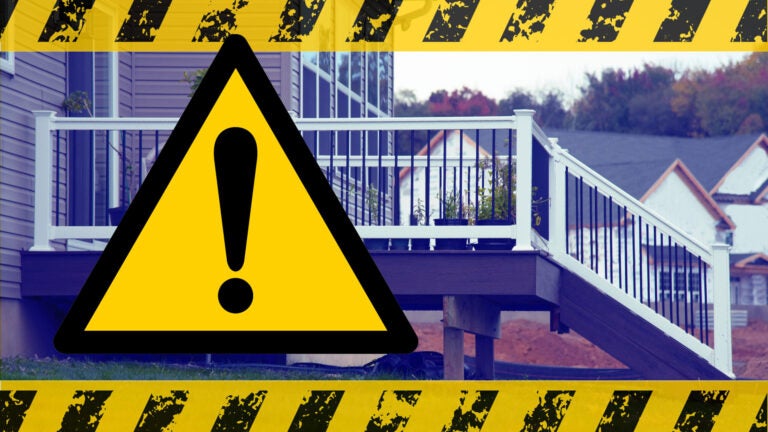
May is Deck Safety Awareness Month, so before you invite the whole clan over for the annual Memorial Day cookout, you should make sure yours is safe.
The Consumer Product Safety Commission estimates that 127,547 people in the United States were injured on residential porches and similar structures in 2020.
Many people don’t give much thought to the structure of their deck, but they should. A bedroom in Massachusetts has to be able to support at least 30 pounds per square foot. A deck has to be able to support 50 pounds per square foot. Plus, decks are subject to the deteriorating effects of the elements year-round.
Why do they have to be so strong? The heaviest load most floors will see is people and furniture. Two adults lying in a bed might make up 500 pounds or so, but that’s spread out over 36 square feet (or more), coming to less than 14 pounds per square foot.
The average adult American male weighs about 200 pounds, according to the Centers for Disease Control and Prevention. Standing with his feet together on your deck, that’s 200 pounds per square foot. It’s easy to see how a dozen people crowding together for a photo could overload a poorly built or damaged deck.
“Decks encourage large gatherings of friends and family members. You cannot compromise the quality of their construction,’’ said Chris Bethoney of Bethoney Builders in Duxbury. “Otherwise, that’s when people can have accidents, or there are construction failures. There’s a reason we have a building code.’’
The North American Deck and Railing Association has a free downloadable inspection guide for consumers. Many home inspectors will perform deck inspections for a fee.
“Decks in many cases also serve as a second means of egress, so it’s critical that they be safe,’’ Bethoney added.
Here are common safety problems you can look for that experts say should be addressed by a professional:
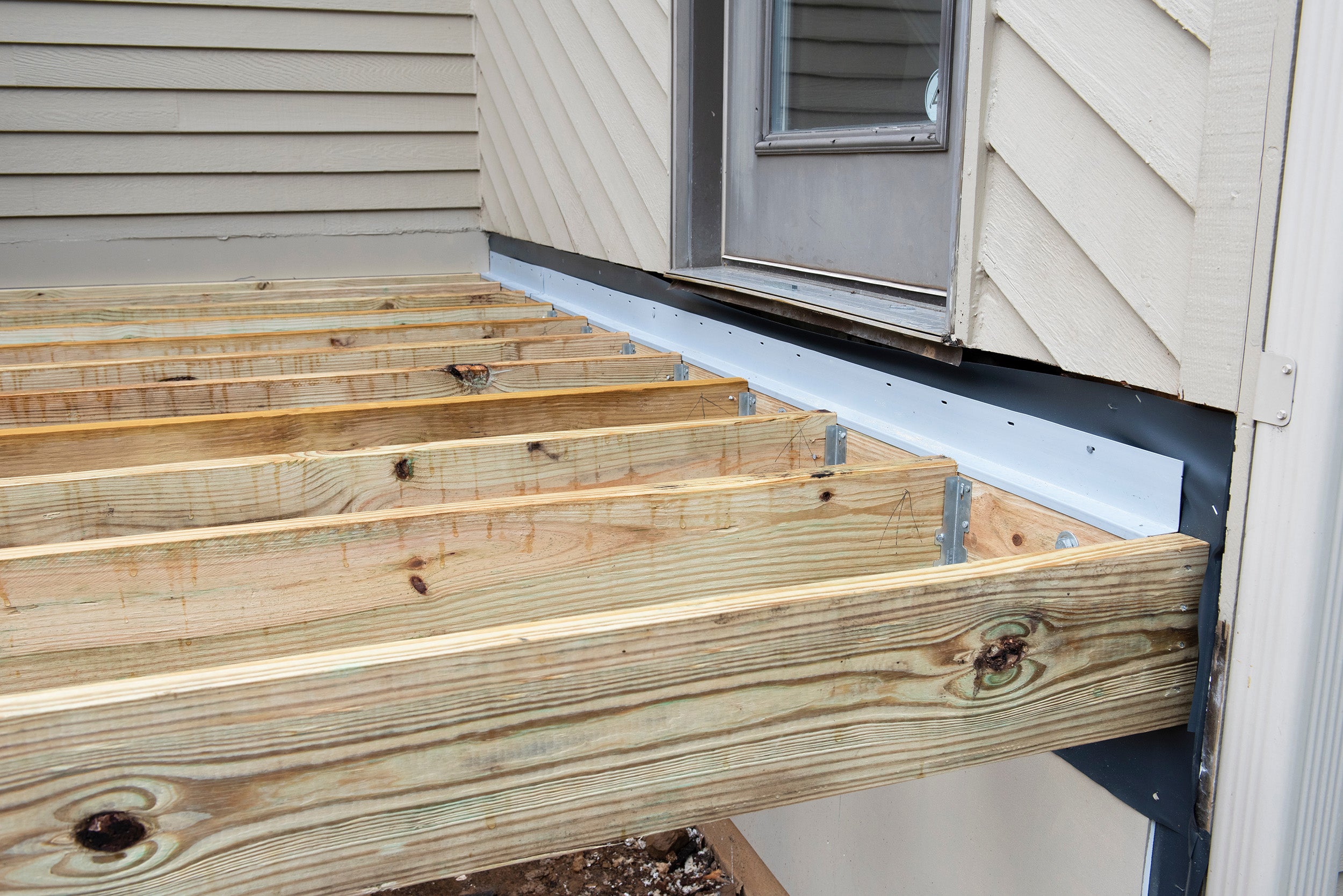
Where the deck is attached to the house
Missing or poorly installed flashing can be an issue. Flashing is a thin piece of metal that goes between the deck and the house and directs water away from where the house meets the deck. Without flashing, even an otherwise well-built deck becomes dangerous because water will rot the wood where the deck is attached to the house (the ledger board). The house will eventually lose its ability to support the deck, and it’s just a matter of time until it becomes overloaded and fails, sometimes with tragic results.
“The physical connection of a deck to the house can be a very vulnerable connection,’’ said Jim Finlay of Archadeck in Burlington. “If it’s not flashed properly, then water is going to get in, and it’s going to rot the structure of the house. I’ve seen rot creep six to seven feet into a house, which can lead to a colossal failure.’’
It’s also very important how the deck is fastened to the house. Conventional nails and screws alone are insufficient; the deck should be connected with lag bolts or structural screws. If all you see are nails, or you notice any separation, you should have the structure refastened right away.
Footings
One of the most overlooked yet critical points of failure are the footings, said Mark Philben, the Globe’s Ask the Remodeler writer and the project development manager at Charlie Allen Renovations in Cambridge. Those need to be 48 inches deep at a minimum, he said. “It is rare, if nonexistent, that the floor framing itself fails. It is almost always the point of contact with the house or the ground.”
Railings
Weak, improperly built, and missing railings are also a common problem. Any deck or set of stairs more than 30 inches above the ground needs a 36-inch railing with balusters spaced such that a 6-inch-diameter ball cannot pass between them, according to the state’s building code. And they have to be strong enough to prevent people from falling off the side of the deck if they lean on them or fall into them.
But “the weakest connection on a deck tends to be the bottom stair rail post,’’ Finlay said. People should try shaking the railing at the bottom of the stairs, he said. “If it wiggles a lot, then it’s dangerous and should be reinforced. The same is true for all railings.’’
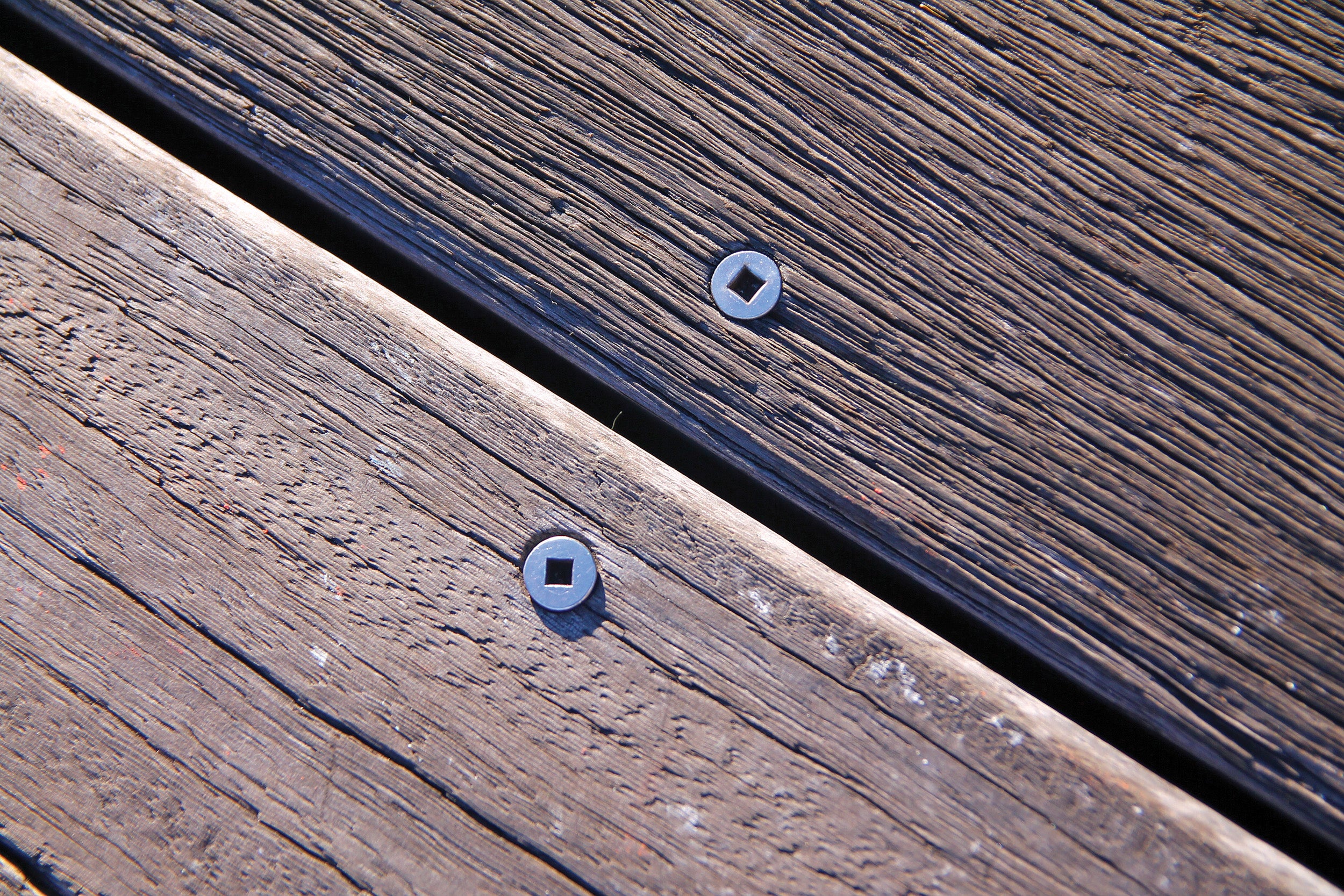
Fasteners
“We build a deck, and the bolts and screws are nice and tight,’’ Finlay said. “But come back in a year, and sometimes the pressure-treated wood shrunk and some of the joints that were tight are now loose. You [also] get wobbly rail posts or stairs. … These connections have to be reinforced.’’
Bethoney said homeowners should periodically examine all of the visible fastenersin their deck, especially on the underside, if they can access them.
“The joist hangers could be corroded or missing nails,’’ which can occur because the proper galvanized fastener was not used, he said. Plus, “Every hole in a joist hanger should have a nail in it.’’
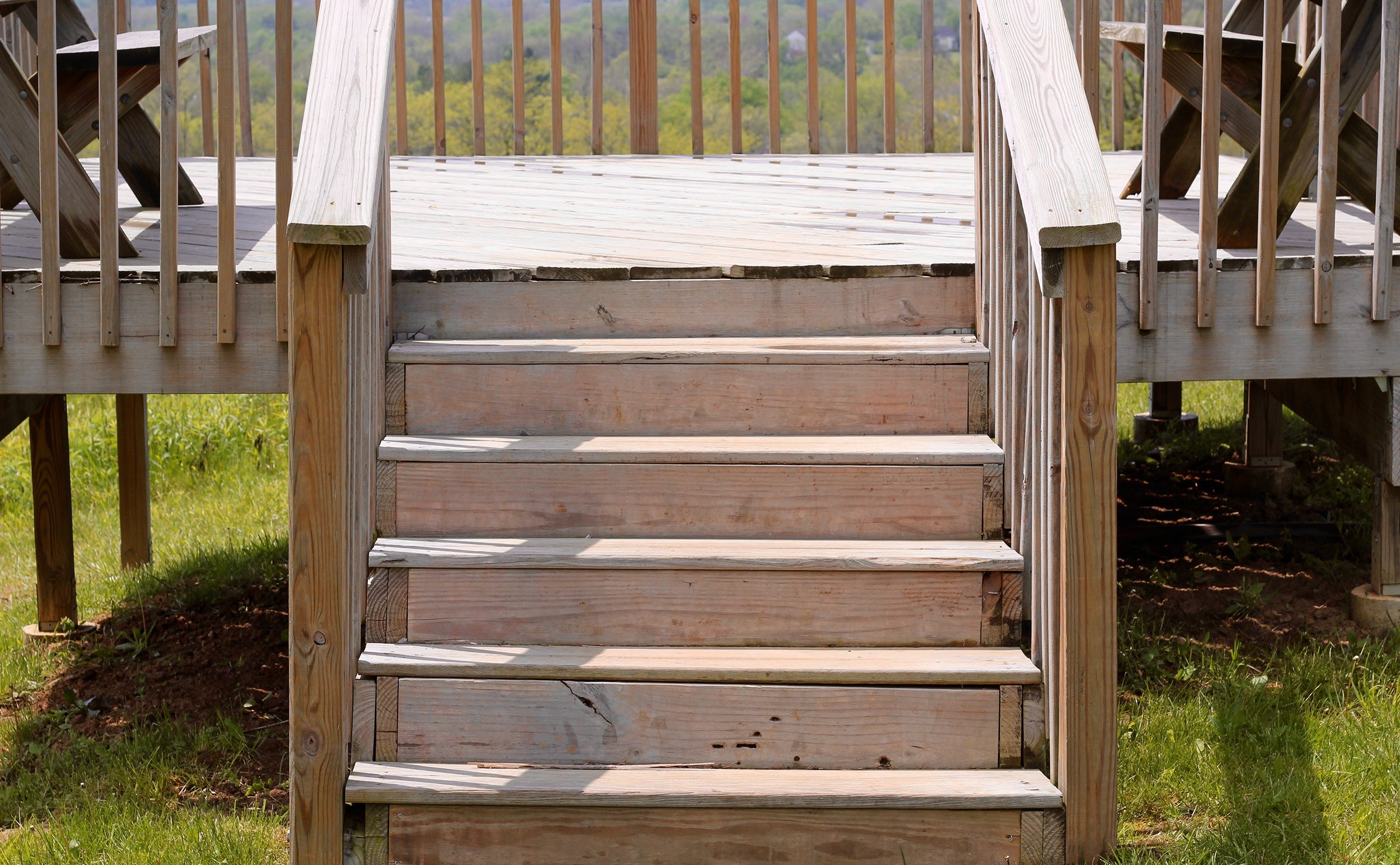
Stairs
Preston Picardi of Bulldog Decks said he frequently finds the top of the deck stairs poorly connected.If that connection fails, the stairs can collapse.
“Sometimes you see them hung by a piece of decking, and they always split,’’ he said. “I’ve even seen interior plywood used, and that eventually rots out. The stairs should be supported by metal brackets/hangers. A full four-foot piece of two-by-twelve with structural screws on the backside is a nice, solid thing to hang them on, too.’’
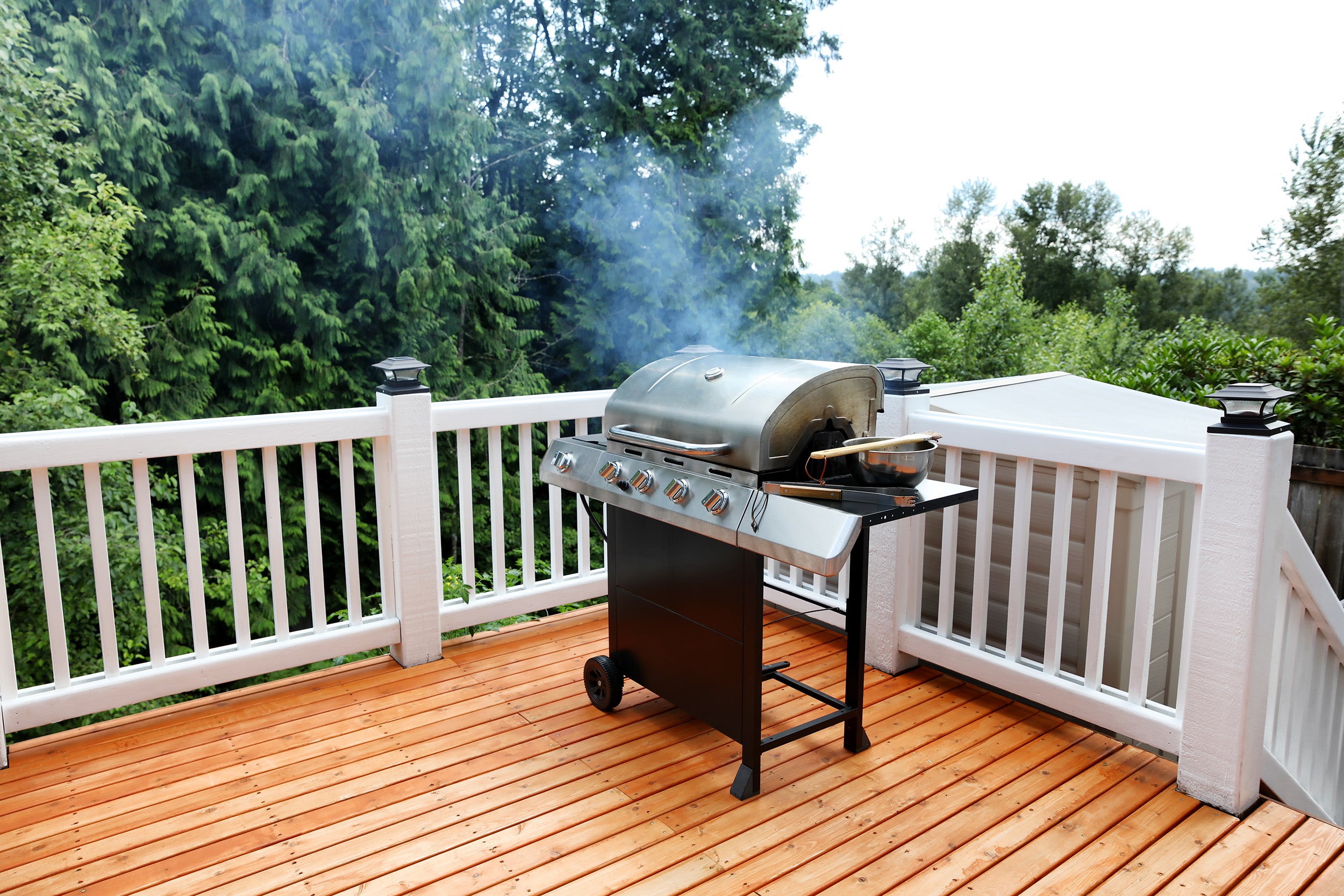
Grilling
This is another common deck hazard. Grills can melt vinyl siding or vinyl railing components, so make sure you have plenty of clearance.
In the city of Boston, “Gas grills are not permitted inside or on first floor porches, decks, or balconies that are enclosed by a roof/ceiling or other confining material of any building or structure used for habitation.’’
Go to https://bit.ly/3LPHkic for more information about grill safety.
Jim Morrison can be reached at [email protected]. Subscribe to the Globe’s free real estate newsletter — our weekly digest on buying, selling, and design — at pages.email.bostonglobe.com/AddressSignUp. Follow us on Twitter @globehomes.





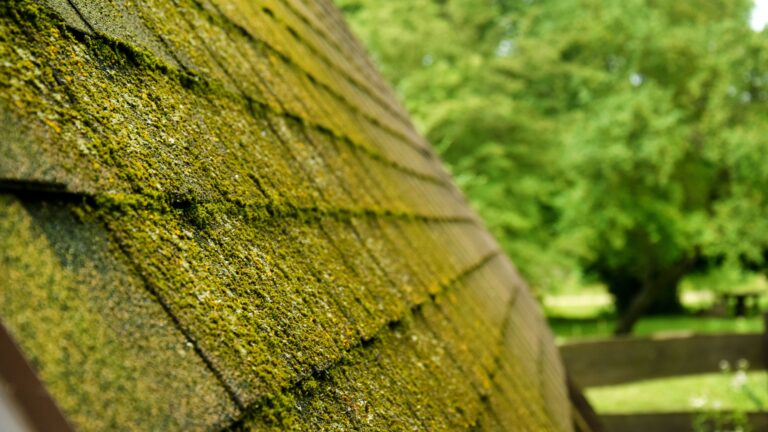
Conversation
This discussion has ended. Please join elsewhere on Boston.com